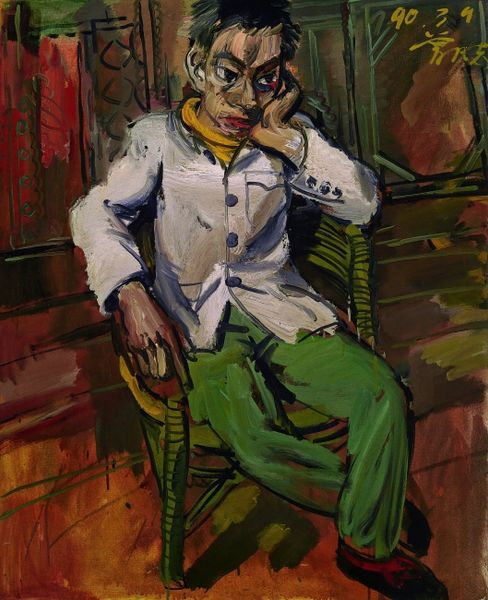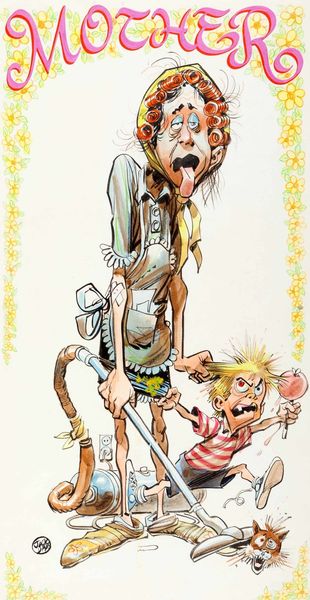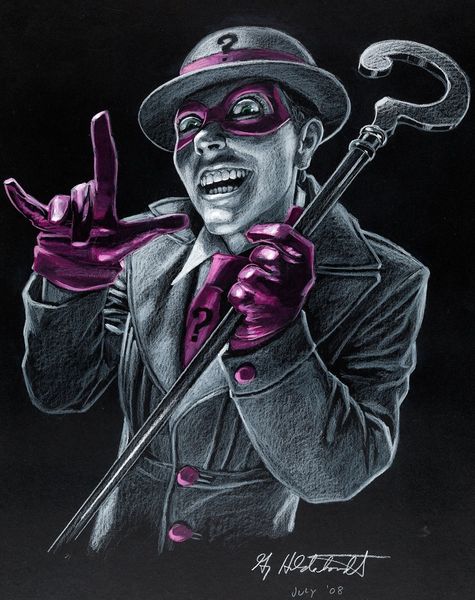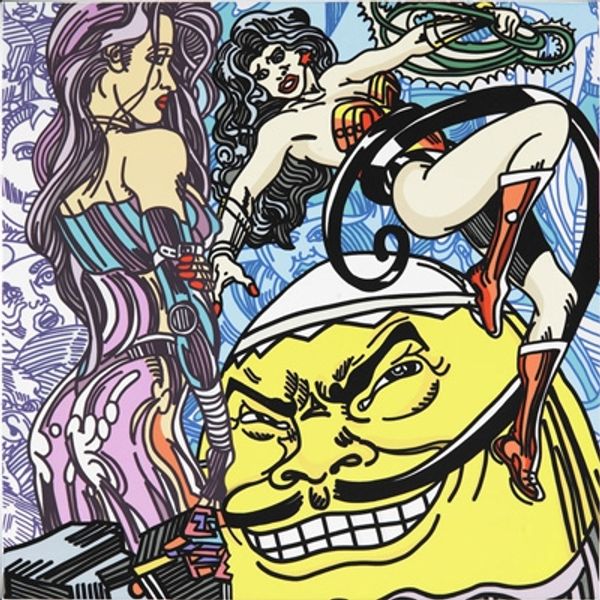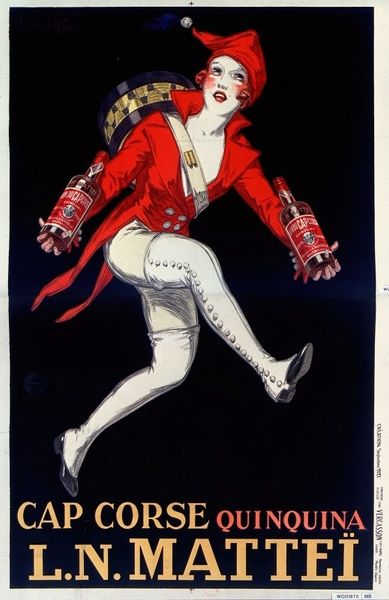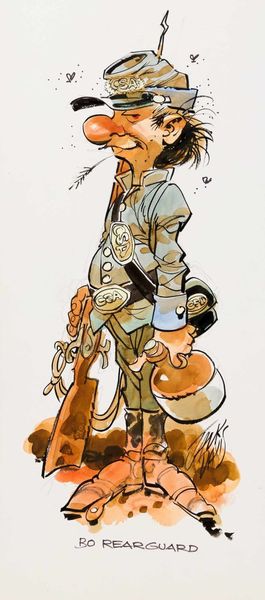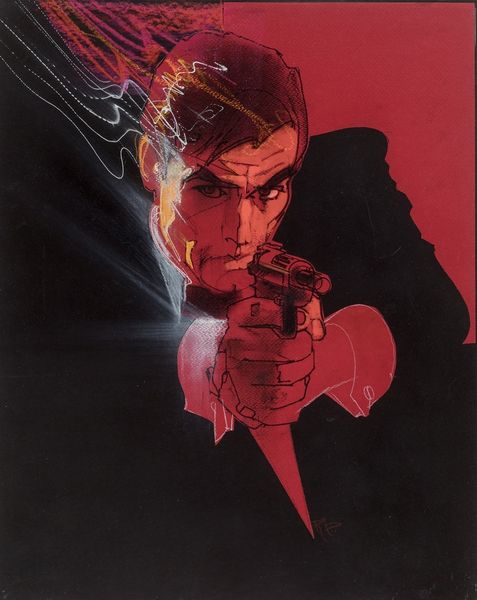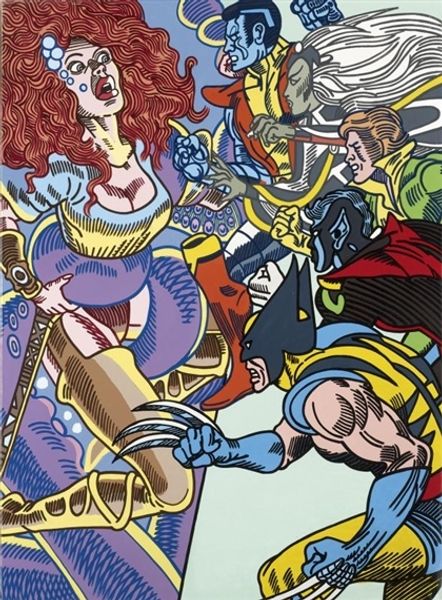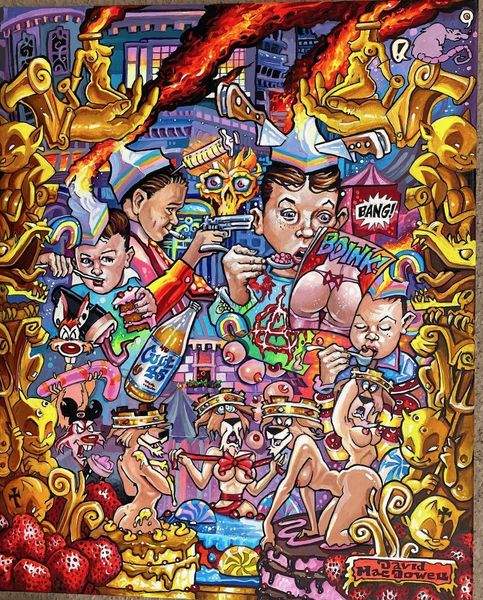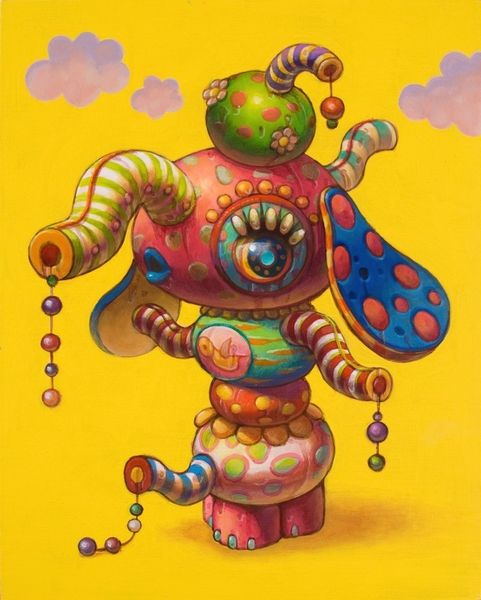
drawing, paper, ink
#
drawing
#
contemporary
#
figuration
#
paper
#
ink
#
naive art
#
comic
Copyright: Hirohiko Araki,Fair Use
Curator: Hirohiko Araki's "Dead Man's Questions," created in 1999, immediately strikes one as... unsettling. It has a slightly disquieting mood with its odd arrangement of elements. Editor: Absolutely. I see those disembodied objects clinging to the figure's form – cars, doors, and portraits. It feels like an inventory of stolen things, an embodiment of material possessions defining the subject, almost like brand placement, wouldn’t you agree? Curator: I would argue that the placement is meant to highlight a critical investigation into issues of social inequality and access within a postmodern society. There’s a conversation here about power structures reflected in our daily interactions that directly affect quality of life and how society approaches gender and intersectionality. Editor: Gender is something else altogether. It appears and reappears as material: faces printed on cloth. Are these ghostly figures made solid by becoming the stuff of commerce, printed like any bolt of fabric to become merely something bought, used, and tossed away? What do you think about that odd detail of string looping across the figure’s fingertips? Curator: A web of interpersonal and intrapersonal connections and negotiations! Strings of connection—both visible and invisible. It suggests, maybe, our role in society’s economic and ethical tangles; strings of influence and shared interests between actors; shared stakes in various political machinations. There is an unsettling feeling for a reason. This work attempts to investigate and capture our attention using surreal devices and imagery. Editor: Yes. Well, for me, those figures on his garments reduce the person, commodify him and everyone. I notice, too, that much of the medium is commercially available: ink and paper. The availability to purchase such commonplace materials only serves to remind that one thing all individuals share is access to the mundane, like an inky drawing on paper. That levels the playing field between classes and other forms of hierarchical stratifications in societies everywhere, throughout all human history. I also think the artist has made good decisions on its design that is thought-provoking while utilizing traditional commercial-grade materials. Curator: True enough! I will carry this vision in my pocket going forward. My thanks for discussing! Editor: Likewise. The experience definitely prompted some needed consideration of the mundane and whether or not our social webs ultimately ensnare us!

